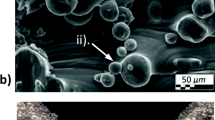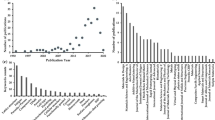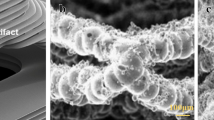Abstract
Metal additive manufacturing (MAM) enables the fabrication of structures with complexity and resolution that cannot be achieved by traditional manufacturing techniques, including lattice structures. However, MAM processes inherently induce local manufacturing defects, resulting in variation between the idealised and as-manufactured geometry and potentially introducing stress concentrations that are detrimental to structural performance. Quantification of these effects on mechanical performance enables the manipulation of intended lattice geometry to enhance structural performance. However, due to the geometric complexity and small scale of geometric defects, experimental testing and numerical simulation of lattice structures are technically difficult and time-consuming. To overcome this limitation, a novel methodology for quantifying the effect of manufacturing defects on the mechanical properties of MAM lattice structural elements is proposed. This method involves the automated analysis of microscope images of as-manufactured lattice structures to generate numerical models that automate the identification of plastic hinge behaviour in node elements based on custom MAM material properties. This method is applied to Ti-6Al-4V lattice structures fabricated by selective laser melting (SLM) with a range of strut and node diameters and cell sizes. This novel method is shown to predict the effect of local manufacturing defects on bulk lattice mechanical response and provides an efficient tool for the optimisation of as-manufactured MAM lattice structures.






















Similar content being viewed by others
Notes
Inclination angle is the angle between the build platen and a downward-facing surface.
References
Zhang XZ et al (2018) Selective electron beam manufactured Ti-6Al-4V lattice structures for orthopedic implant applications: current status and outstanding challenges. Curr Opinion Solid State Mater Sci 22(3):75–99
Maconachie T et al (2019) SLM lattice structures: properties, performance, applications and challenges. Mater Des 183:108137
Tao W and Leu MC. (2016) Design of lattice structure for additive manufacturing. In International Symposium on Flexible Automation (ISFA). 2016.
Zadpoor AA (2018) Mechanical performance of additively manufactured meta-biomaterials. Acta Biomater
Gong H, et al. The effects of processing parameters on defect regularity in Ti-6Al-4V parts fabricated by selective laser melting and electron beam melting. In 24th annual international solid freeform fabrication symposium - an additive manufacturing conference. Austin, Texas.
Sarker A et al (2018) Angle defines attachment: switching the biological response to titanium interfaces by modifying the inclination angle during selective laser melting. Mater Des 154:326–339
Fotovvati B, Asadi E (2019) Size effects on geometrical accuracy for additive manufacturing of Ti-6Al-4V ELI parts. Int J Adv Manuf Technol 104(5):2951–2959
Dallago M et al (2018) Effect of the geometrical defectiveness on the mechanical properties of SLM biomedical Ti6Al4V lattices. Proc Struct Integr 13:161–167
Van Bael S et al (2011) Micro-CT-based improvement of geometrical and mechanical controllability of selective laser melted Ti6Al4V porous structures. Mater Sci Eng A 528(24):7423–7431
Gibson LJ and Ashby MF, (1999) Cellular solids: structure and properties. Cambridge university press.
Xiao Z et al (2018) Evaluation of topology-optimized lattice structures manufactured via selective laser melting. Mater Des 143:27–37
Banhart J (2000) Manufacturing routes for metallic foams. Jom 52(12):22–27
He M, Hu W (2008) A study on composite honeycomb sandwich panel structure. Mater Des 29(3):709–713
Yan C et al (2014) Evaluation of light-weight AlSi10Mg periodic cellular lattice structures fabricated via direct metal laser sintering. J Mater Process Technol 214(4):856–864
Leary M et al (2016) Selective laser melting (SLM) of AlSi12Mg lattice structures. Mater Des 98:344–357
Yan C et al (2014) Advanced lightweight 316L stainless steel cellular lattice structures fabricated via selective laser melting. Mater Des 55:533–541
Vandenbroucke B, Kruth J-P (2007) Selective laser melting of biocompatible metals for rapid manufacturing of medical parts. Rapid Prototyp J 13(4):196–203
Leary M et al (2019) Mechanical and thermal characterisation of AlSi10Mg SLM block support structures. Mater Des 183:108138
Wauthle R et al (2015) Effects of build orientation and heat treatment on the microstructure and mechanical properties of selective laser melted Ti6Al4V lattice structures. Addit Manuf 5:77–84
Yavari SA et al (2015) Relationship between unit cell type and porosity and the fatigue behavior of selective laser melted meta-biomaterials. J Mech Behav Biomed Mater 43:91–100
Santorinaios M, et al., (2006) Crush behaviour of open cellular lattice structures manufactured using selective laser melting. WIT Trans Built Environ 85.
Yan C et al (2012) Evaluations of cellular lattice structures manufactured using selective laser melting. Int J Mach Tools Manuf 62:32–38
Fox JC, Moylan SP, Lane BM (2016) Effect of process parameters on the surface roughness of overhanging structures in laser powder bed fusion additive manufacturing. Procedia CIRP 45:131–134
Leary M (2017) 4 - Surface roughness optimisation for selective laser melting (SLM): accommodating relevant and irrelevant surfaces, in Laser Additive Manufacturing, M. Brandt, Editor, Woodhead Publishing. p. 99-118.
Mullen L et al (2010) Selective laser melting: a unit cell approach for the manufacture of porous, titanium, bone in-growth constructs, suitable for orthopedic applications. II. Randomized structures. J Biomed Mater Res B Appl Biomater 92B(1):178–188
Islam M et al (2013) Temperature profile and imaging analysis of laser additive manufacturing of stainless steel. Phys Procedia 41:835–842
Kurzynowski T, et al. (2012) Parameters in selective laser melting for processing metallic powders. In Proceedings of SPIE - The International Society for Optical Engineering
Bächle M, Kohal RJ (2004) A systematic review of the influence of different titanium surfaces on proliferation, differentiation and protein synthesis of osteoblast-like MG63 cells. Eine systematische Uebersicht über den Einfluss von verschiedenen Titanoberflächen auf die Proliferation, Differenzierung und Proteinsynthese von osteoblastenähnlichen MG63 Zellen. Clin Oral Implants Res 15(6):683–692
Deligianni DD et al (2000) Effect of surface roughness of hydroxyapatite on human bone marrow cell adhesion, proliferation, differentiation and detachment strength. Biomaterials 22(1):87–96
Lincks J et al (1998) Response of MG63 osteoblast-like cells to titanium and titanium alloy is dependent on surface roughness and composition. Biomaterials 19(23):2219–2232
Wennerberg A, Albrektsson T (2009) Effects of titanium surface topography on bone integration: a systematic review. Clin Oral Implants Res 20:172–184
Kim HJ et al (2005) Varying Ti-6Al-4V surface roughness induces different early morphologic and molecular responses in MG63 osteoblast-like cells. J Biomed Mater Res A 74A(3):366–373
Bowers KT et al (1992) Optimization of surface micromorphology for enhanced osteoblast responses in vitro. Int J Oral Maxillofac Implants 7(3):302–310
Jemat A et al (2015) Surface modifications and their effects on titanium dental implants. Biomed Res Int 2015:791725
Frazier WE (2014) Metal additive manufacturing: a review. J Mater Eng Perform 23(6):1917–1928
Liu Y, Yang Y, Wang D (2016) A study on the residual stress during selective laser melting (SLM) of metallic powder. Int J Adv Manuf Technol 87(1):647–656
Ali H et al (2017) In-situ residual stress reduction, martensitic decomposition and mechanical properties enhancement through high temperature powder bed pre-heating of Selective Laser Melted Ti6Al4V. Mater Sci Eng A 695:211–220
McMillan M et al (2015) Programmatic lattice generation for additive manufacture. Procedia Technology 20:178–184
Downing D et al (2020) Heat transfer in lattice structures during metal additive manufacturing: numerical exploration of temperature field evolution. Rapid Prototyp J
Xu W et al (2017) In situ tailoring microstructure in additively manufactured Ti-6Al-4V for superior mechanical performance. Acta Mater 125:390–400
Gorenc B, et al. (2005) Steel designers’ handbook. UNSW Press.
Feng Q et al (2016) An investigation into the quasi-static response of Ti6al4V lattice structures manufactured using selective laser melting, in Smart Innovation. Systems and Technologies 52:399–409
Fotovvati B, Namdari N, Dehghanghadikolaei A (2018) Fatigue performance of selective laser melted Ti6Al4V components: state of the art. Materials research express 6(1):012002
Mazur M et al (2016) Deformation and failure behaviour of Ti-6Al-4V lattice structures manufactured by selective laser melting (SLM). Int J Adv Manuf Technol 84(5):1391–1411
Fotovvati B, Etesami SA, Asadi E (2019) Process-property-geometry correlations for additively-manufactured Ti–6Al–4V sheets. Mater Sci Eng A 760:431–447
Acknowledgements
This research was conducted by the Australian Research Council Industrial Transformation Training Centre in Additive Biomanufacturing (IC160100026). The authors acknowledge the facilities and the scientific and technical assistance of the RMIT Advanced Manufacturing Precinct.
Funding
This work was financially supported by the members of the ARC Training Centre for Lightweight Automotive Structures and from the Australian Research Council (Grant Reference IC160100032).
Author information
Authors and Affiliations
Corresponding author
Additional information
Publisher’s note
Springer Nature remains neutral with regard to jurisdictional claims in published maps and institutional affiliations.
Rights and permissions
About this article
Cite this article
Alghamdi, A., Maconachie, T., Downing, D. et al. Effect of additive manufactured lattice defects on mechanical properties: an automated method for the enhancement of lattice geometry. Int J Adv Manuf Technol 108, 957–971 (2020). https://doi.org/10.1007/s00170-020-05394-8
Received:
Accepted:
Published:
Issue Date:
DOI: https://doi.org/10.1007/s00170-020-05394-8




